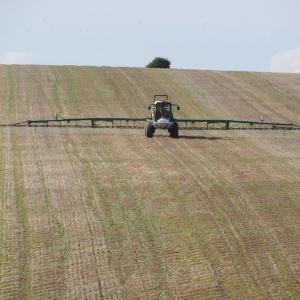
The cost-effectiveness of different methods of cutting agricultural greenhouse gas emissions is often calculated using marginal abatement cost curves (MACCs). FCRN member Dominic Moran of the University of Edinburgh has quantified the uncertainties in calculating MACCs for Scottish agricultural mitigation options, including improving land drainage, improving the timing of nitrogen application, and using controlled release fertilisers. The paper suggests that policymakers may wish to exclude options that have a high uncertainty, as they may not always be as cost-effective as the MACC suggests.
Abstract
The agricultural sector, as an important source of greenhouse gas (GHG) emissions, is under pressure to reduce its contribution to climate change. Decisions on financing and regulating agricultural GHG mitigation are often informed by cost‐effectiveness analysis of the potential GHG reduction in the sector. A commonly used tool for such analysis is the bottom‐up marginal abatement cost curve (MACC) which assesses mitigation options and calculates their cumulative cost‐effective mitigation potential. MACCs are largely deterministic, typically not reflecting uncertainties in underlying input variables. We analyse the uncertainty of GHG mitigation estimates in a bottom‐up MACC for agriculture, for those uncertainties capable of quantitative assessment. Our analysis identifies the sources and types of uncertainties in the cost‐effectiveness analysis and estimates the statistical uncertainty of the results by propagating uncertainty through the MACC via Monte Carlo analysis. For the case of Scottish agriculture, the uncertainty of the cost‐effective abatement potential from agricultural land, as expressed by the coefficient of variation, was between 9.6% and 107.3% across scenarios. This means that the probability of the actual abatement being less than half of the estimated abatement ranged from <1% (in the scenario with lowest uncertainty) to 32% (in the scenario with highest uncertainty). The main contributors to uncertainty are the adoption rate and abatement rate. While most mitigation options appear to be ‘win–win’ under some scenarios, many have a high probability of switching between being cost‐ineffective and cost‐effective.
Reference
Eory, V., Topp, C.F., Butler, A. and Moran, D., 2018. Addressing uncertainty in efficient mitigation of agricultural greenhouse gas emissions. Journal of Agricultural Economics, 69(3), pp. 627-645.
Read the full paper here. See also the Foodsource chapter How can we reduce food-related greenhouse gas emissions?







Post a new comment »